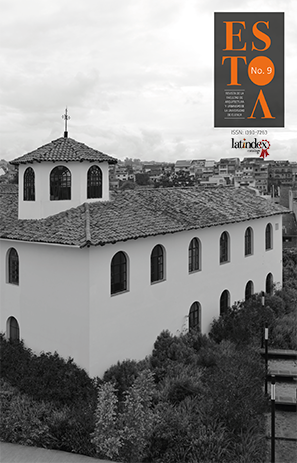Mudéjar Façades in Toledo palaces
DOI:
https://doi.org/10.18537/est.v005.n009.10Abstract
Ever since its recovery from the Arabs by Alfonso VI in 1085 and particularly during the 14th and 15th centuries, Toledo became the city concentrating both Castilian political power and the individual noblemen holding it. In every respect the city became the scene of intense competition between these individuals, a competition that is visible in the building of private homes, the grandee’s material status symbol. The restrained ornamental and compositional lines regulating the buildings of this period, however, forced each palace to express its owner’s wealth by means of its façade, a consequence of the fascination exerted by Almohad architecture across the border, in spite of the ongoing confrontation, and its resulting influence.
Keywords: Medieval architecture, Castilian aristocracy, Façades, Toledo.
Downloads
References
Martínez Caviró, B. (1980). Mudéjar Toledano. Palacios y Conventos. Madrid. Vocal.
Martínez Caviró, B. (2005). Las casas principales de los Silva en Toledo. Madrid. Real Academia Matritense de Heráldica y Genealogía.
Muelas Jiménez, M y Mateo Ortega, A. (2011).El Palacio de Fuensalida. La Rehabilitación Toledo. A, Pareja Editor-FCC.
Passini, J. (2004). Casas y casas principales urbanas. El espacio doméstico de Toledo a fines de la Edad Media. Toledo. UCLM.
Passini, J. (2007). La Ciudad Medieval de Toledo: Historia, Arqueología y Rehabilitación de la casa. Toledo. UCLM.
Pérez Higuera, T. (1991). Arquitecturas de Toledo. Toledo. Servicio de Publicaciones de. JCCM.
Porres Martín-Cleto, J. (1971). Historia de las calles de Toledo. Toledo. Editorial Zocodover.
Ramón Parro, S. (1857). Toledo en la Mano. Toledo. Imprenta y Librería de Severiano López Fando.
Serrano Rodríguez, E. (2012). Piedad, nobleza y reforma. La fundación del monasterio de la Madre de Dios en Toledo (1483). Salamanca. Separata de Archivo Dominicano 23-2012. Ed. San Esteban.
Downloads
Published
How to Cite
Issue
Section
License
The Journal declines any responsibility for possible conflicts derived from the authorship of the works that are published in it.
The University of Cuenca in Ecuador conserves the patrimonial rights (copyright) of the published works and will favor the reuse of the same ones, these can be: copy, use, diffuse, transmit and expose publicly.
Unless otherwise indicated, all contents of the electronic edition are distributed under a Creative Commons Attribution-NonCommercial-ShareAlike 4.0 International License.




